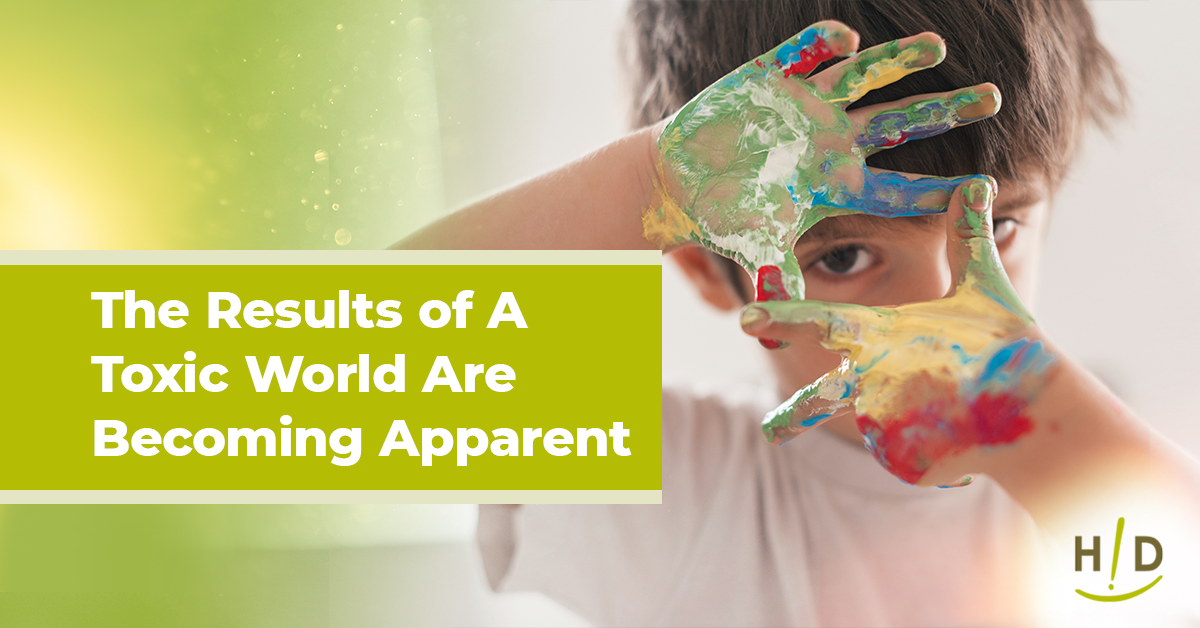CTE is a degenerative brain condition known as chronic traumatic encephalopathy. It has been linked to repeated blows to the head — the 2015 movie Concussion chronicled the discovery of CTE's connection to football. This comes on the heels of the largest study ever of football’s effect on the brain. The study was revealed when a team of researchers based at Boston University and led by neuropathologist Ann McKee had examined a large databank of neural specimens from former NFL athletes and found that nearly all of them—110 out of 111, or 99 percent—showed signs of the degenerative brain condition known as chronic traumatic encephalopathy, or CTE. This “startlingly high percentage” has since made headlines in nearly every major publication. I am not interested in creating an article on the dangers of football injuries on the brain. What I want to impart here is the amount of time, effort, money and media coverage on this brain injury that is derived from a pre-chosen desire to participate in an obviously dangerous sport where head injuries are common. Where is the media coverage and the studies to support findings that autism, epilepsy and a host of other neurological issues are trending upward due to radiation, GMO foods, chemically laced vaccines, fluoridated water, heavy metal toxins, etc.? Based on parental responses to survey questions, approximately 15% of children in the United States ages 3 to 17 years were affected by neurodevelopmental disorders, including ADHD, learning disabilities, intellectual disability, cerebral palsy, autism, seizures, stuttering or stammering, moderate to profound hearing loss, blindness, and other developmental delays, in 2006–2008. Among these conditions, ADHD and learning disabilities had the greatest prevalence. Many children affected by neurodevelopmental disorders have more than one of these conditions: for example, about 4% of U.S. children have both ADHD and a learning disability. These are statistics that are over 10 years old! The very fact that I can’t find any more recent ones is indicative of our country’s lack of focus on the important issues—our children!
Statistical breakdown of children being born with ADHD Prevalence
ADHD is more common than doctors may have previously believed, according to statistics from the Center for Disease Control and Prevention (CDC). The report, released in November of 2013, shows that up to 11 percent of children aged 4-17 have been diagnosed with ADHD at some point in their lives. In 2003, it was only 7.8%. This is a definite increase in what is considered the number one neurodevelopmental issue in children. Autism Prevalence: The Centers for Disease Control and Prevention (CDC) estimates that 1 in 68 children in the U.S. have autism. The prevalence is 1 in 42 for boys and 1 in 189 for girls. These rates yield a gender ratio of about five boys for every girl. The latest estimate of autism prevalence—1 in 68—is up 30 percent from the 1 in 88 rate reported in 2008, and more than double the 1 in 150 rate in 2000. In fact, the trend has been steeply upward since the early 1990s, not only in the U.S. but globally. ASD (Autism Spectrum Disorder) is estimated to affect more than 2 million individuals in the U.S. And even the CDC admits that this is not accurate data. There are likely many more children with this neurological impairment but who have not been identified.
Epilepsy
In 2015, 1.2% of the total US population had active epilepsy. This is about 3.4 million people with epilepsy nationwide: 3 million adults and 470,000 children. According to the latest estimates, about 0.6% of children aged 0-17 years have active epilepsy. Think of a school with 1,000 students—this means about 6 of them could have epilepsy. Cerebral Palsy Cerebral Palsy is the most common of all childhood disabilities, affecting approximately three live births out of every thousand in the United States. Studies over the past several decades have provided the following statistics, commonly quoted in the United States:
- About 764,000 children and adults currently have Cerebral Palsy
- About 500,000 children under age of 18 currently have Cerebral Palsy
- About two to three children out of every 1,000 have Cerebral Palsy (United States studies have yielded rates as low as 2.3 per 1,000 children to as high as 3.6 per 1,000 children)
- About 10,000 babies born each year will develop Cerebral Palsy
- Around 8,000 to 10,000 babies and infants are diagnosed per year with Cerebral Palsy
- Around 1,200 to 1,500 preschool-aged children are diagnosed per year with Cerebral Palsy
As you can see by the dates on the “most recent” statistics, we cannot rely on them to give a true indication of what is happening today or even what will happen in the future. There just aren’t enough recent studies being done. Why not? What is causing such a sizeable increase in children being born with neurodevelopmental concerns? Lead, methylmercury, and PCBs are widespread environmental contaminants associated with adverse effects on a child’s developing brain and nervous system in multiple studies. The National Toxicology Program (NTP) has concluded that childhood lead exposure is associated with Neurodevelopmental Disorders (Health 2 America’s Children and the Environment, Third Edition, Updated October 2015) with reduced cognitive function, including lower intelligence quotient (IQ) and reduced academic achievement. The NTP has also concluded that childhood lead exposure is associated with attention-related behavioral problems (including inattention, hyperactivity, and diagnosed attention-deficit/hyperactivity disorder) and increased incidence of problem behaviors (including delinquent, criminal, or antisocial behavior). EPA has determined that methylmercury is known to have neurotoxic and developmental effects in humans. Extreme cases of such effects were seen in people prenatally exposed during two high-dose mercury poisoning events in Japan and Iraq, who experienced severe adverse health effects such as cerebral palsy, mental retardation, deafness, and blindness. Results from studies in New Zealand and the Faroe Islands suggest that increased prenatal mercury exposure due to maternal fish consumption was associated with adverse effects on intelligence and decreased functioning in the areas of language, attention, and memory. More recent studies conducted in the United States have found associations between neurodevelopmental effects and blood mercury levels within the range typical for U.S. women, after accounting for the beneficial effects of fish consumption during pregnancy. Several studies of children who were prenatally exposed to elevated levels of polychlorinated biphenyls (PCBs) have suggested links between these contaminants and neurodevelopmental effects, including lowered intelligence and behavioral deficits such as inattention and impulsive behavior. Studies have also reported associations between PCB exposure and deficits in learning and memory. Most of these studies found that the effects are associated with exposure in the womb resulting from the mother having eaten food contaminated with PCBs. A wide variety of other environmental chemicals have been identified as potential concerns for childhood neurological development, but have not been as well studied for these effects as lead, mercury, and PCBs. Concerns for these additional chemicals are based on both laboratory (Health Neurodevelopmental Disorders America’s Children and the Environment, Third Edition, Updated October 2015) animal studies and human epidemiological research; in most cases, the epidemiological studies are relatively new and the literature is just beginning to develop. Among the chemicals being studied for potential effects on childhood neurological development are organophosphate pesticides, polybrominated diphenyl ether flame retardants (PBDEs), phthalates, bisphenol A (BPA), polycyclic aromatic hydrocarbons (PAHs), arsenic, and perchlorate. Exposure to all of these chemicals is widespread in the United States for both children and adults. Organophosphate pesticides can interfere with the proper function of the nervous system when exposure is sufficiently high. Many children may have low capacity to detoxify organophosphate pesticides through age 7 years. In addition, recent studies have reported an association between prenatal organophosphate exposure and childhood ADHD in a U.S. community with relatively high exposures to organophosphate pesticides, as well as with exposures found within the general U.S. population. Two studies of a group of New York City children ages 4 to 9 years reported associations between prenatal exposure to certain phthalates and behavioral deficits, including effects on attention, conduct, and social behaviors. Some of the behavioral deficits observed in these studies are similar to those commonly displayed in children with ADHD and conduct disorder. Studies conducted in South Korea of children ages 8 to 11 years reported that children with higher levels of certain phthalate metabolites in their urine were more inattentive and hyperactive, displayed more symptoms of ADHD, and had lower IQ compared with those who had lower levels. The exposure levels in these studies are comparable to typical exposures in the U.S. population. In 2008, the NTP concluded that there is “some concern” for effects of early-life (including prenatal) BPA exposure on brain development and behavior, based on findings of animal studies conducted at relatively low doses. An epidemiological study conducted in Ohio reported an association between prenatal exposure to BPA and effects on children’s behavior (increased hyperactivity and aggression) at age 2 years. A child’s brain and nervous system are vulnerable to adverse impacts from pollutants because they go through a long developmental process beginning shortly after conception and continuing through adolescence. This complex developmental process requires the precise coordination of cell growth and movement, and may be disrupted by even short-term exposures to environmental contaminants if they occur at critical stages of development. This disruption can lead to neurodevelopmental deficits that may have an effect on the child’s achievements and behavior even when they do not result in a diagnosable disorder. The studies I just presented are a small portion of what is already available. Although they may not be recent, their findings should be telling of the urgency of how the United States finds itself today. To get an idea of what the world looks like today:
- Many of the parks and playgrounds are now set up with handicapped accessible swings for children to enjoy.
- There are now large foundations set up to assist children who are physically and mentally disabled.
- The blue disabled signs in front of big box stores are now being parked by young parents removing wheelchairs instead of elderly folks with canes.
- School nurses no longer just hand out acetaminophen for a headache. They are now responsible for one on one care of a severely disabled child. The costs associated with this are getting rather burdensome for the schools.
- It has become common place for people to be walking their children in wheelchairs and it is common to see helmets on children. Not too many years ago, it was a bit of an anomaly to see this, but not anymore.
To sum up: When a woman and a man choose to create life, in the perfect world, they would abstain from drinking from plastic bottles, eating toxic food which may include sushi, other fish, microwave popcorn, soda pop, high fructose corn syrup, MSG, hormone filled meats and dairy, preservatives, pesticide-filled foods, and more. They also would be wise to no longer sleep with a cell phone beside them, refrain from getting the flu vaccine, try to avoid inhaling toxic fumes and begin to have a general sense of well-being so their bodies can create strong sperm and eggs to create a healthy baby. This doesn’t just happen naturally and it seems that it is happening less and less every day. Perhaps it is time to add the top 20 self-care methods to teach men and women in high school so they can learn how important it is before they have children. Perhaps it is time to add a class for the pregnant mom teaching her the measures she needs to take to increase the chances of having a healthy newborn instead of just giving her a test to see what issues it has in utero. We have a grandchild of our own who has cerebral palsy and epilepsy. We have another one with autism. We are just heartbroken that these children must endure these hardships in a world that is naturally difficult to begin with. As much as we are grateful for the foundations and the unique methods that are being developed to assist them to improve their quality of life, we are discouraged that more attention is being placed on the effects of football to the brain than to the futures of our children. We are discouraged that more attention is being placed on how to work with these children than on why it has become so commonplace and how to avoid having so many children born disabled to begin with. Creating a large building to temporarily house disabled children when their parent is ill, doesn’t make the world a better place, nor does it truly help the child or the parent in the long term. Why aren’t people demanding more from those who should be held accountable? Why aren’t we demanding more answers rather than hiring more teachers’ assistants for the classrooms to house even more disabled young people? We love our grandchildren deeply. We understand how difficult it is to parent a special needs child and this article is only meant to support those who are. Instead of placing blame, let’s try to educate those who will become parents so they can appreciate the vulnerability of the fetus when it is exposed daily to known carcinogens, pesticides, toxins, radiation and so much more. Let’s gather together and bring down those industries that are knowingly exploiting these toxins for monetary gain (like Monsanto) without accountability for their dangerous actions. In 40 years from now, when these new parents are too frail to lift an adult child, what will happen to these adult children? Since there are so many more than even 10 years ago, will there be special facilities constructed? Will these people get respectful treatment when their parents can no longer take care of them? I see a major paradigm shift coming. No longer will there be discussions on how to help baby boomers. Baby boomers will be long gone. But today’s newborns will have many more obstacles to face and our country will have many more as well since the classroom cannot create independent, functioning, self-reliant citizens out of these people. It is time for this country to stop wasting effort on nonsensical issues that only serve to divide. It is time this country unites in the desire to find out why our future children are being born with way too many burdens that are avoidable and unnecessarily placed on these innocent children. If we the people don’t rise up and demand change, then the subtle but damaging effects from this toxic world will continue and we will have no one but ourselves to blame.







